Bunny Screenshot (Median Split Terminating with Voxel Size 0.1):
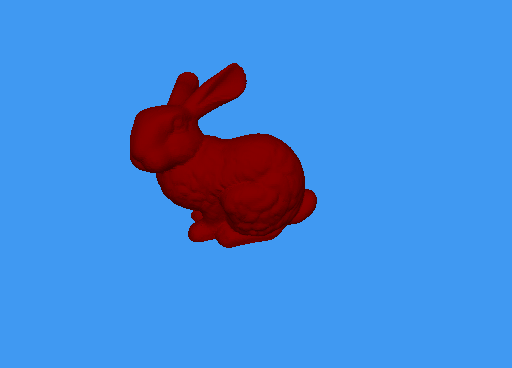
Number of objects in scene: 69451, Size of KD Tree: 1023, Building tree took: 0.149961 seconds, Ray Tracing Took : 53.3895 seconds.
All code for this assignment can be found here
Key Observations:For same-size KD-Trees, the SHA tended to outperform the median-splitting approach when traversing, though it did have an increased overhead when it came to creating the tree. This overhead was greatly reduced by modifying my SHA algorithm and by implementing binning. |
Time to render without KD-Trees:It took forever so I force-stopped it at the 5-hour mark lol |
Method 1: Median SplitIn this method of building KD-Trees, I was using a simple median split. This kind of implementation resulted in exceptionally fast times when it came to building the tree itself, but somewhat longer times when tracing through the tree. This is expected, as the median split does not pick optimal split planes 100% of the time. |
Bunny Screenshot (Median Split Terminating with Voxel Size 0.1):
Number of objects in scene: 69451, Size of KD Tree: 1023, Building tree took: 0.149961 seconds, Ray Tracing Took : 53.3895 seconds. |
Bunny Screenshot 2 (Median Split Terminating with Voxel Size 0.1):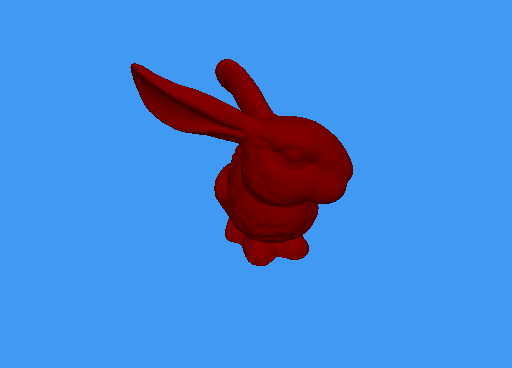
Number of objects in scene: 69451, Size of KD Tree: 1023, Building tree took: 0.148001 seconds, Ray Tracing Took : 69.0459 seconds |
Bunny Screenshot 3 (Median Split Terminating with Recursion Depth 10):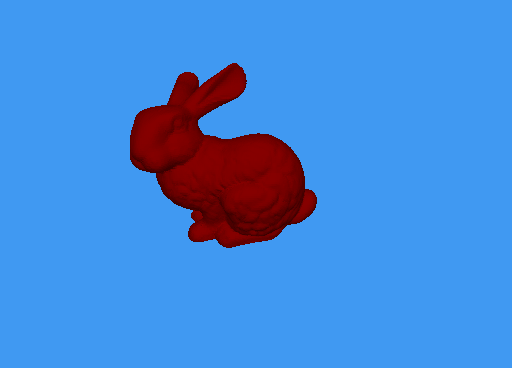
Number of objects in scene: 69451, Size of KD Tree: 1023, Building tree took: 0.138039 seconds, Ray Tracing Took : 53.3901 seconds |
Bunny Screenshot 4 (Median Split Terminating with Recursion Depth 10):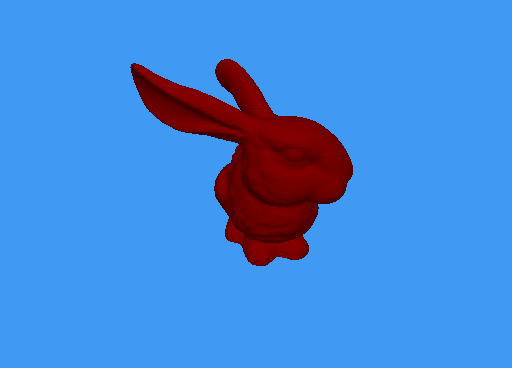
Number of objects in scene: 69451, Size of KD Tree: 1023, Building tree took: 0.143001 seconds, Ray Tracing Took : 67.6355 seconds |
Method 2: Surface Area Heuristic (slow)In this method of building KD-Trees, I was using a surface area heuristic
to calculate the optimal split plane. For each dimension (X, Y, Z) I would
first sort all the primitives in the voxel (the value of each primitive when
sorting would be the center of its bounding box in that dimension). Next, I
would iterate over the min and max values of each primitive's bounding box
(if there are N primitives in the voxel, then this runs 2N times) and use
those values as the location of the split plane. For each split plane, I
would then need to loop over all the primitives in the voxel once more to
determine how many were in the "left" and "right" subvoxels (with an added early
termination check e.g. since the list is sorted as soon as we reach a primitive
that falls after the split plane we can terminate and calculate). I then calculated
the SAH with traversal cost 1.0 and cost of intersection test 1.0. Therefore
the cost was |
Bunny Screenshot 5 (Surface Area Heuristic Terminating with Depth 10):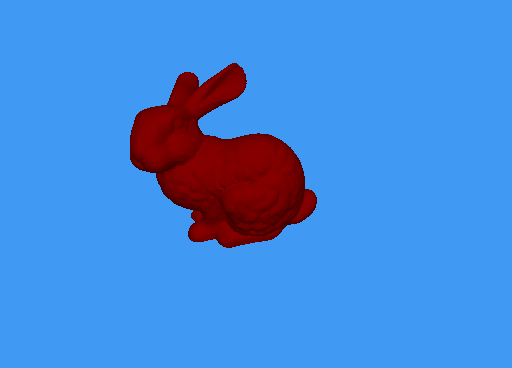
Number of objects in scene: 69451, Size of KD Tree: 1023, Building tree took: 348.607 seconds, Ray Tracing Took : 32.143 seconds |
Bunny Screenshot 6 (Surface Area Heuristic Terminating with Depth 10):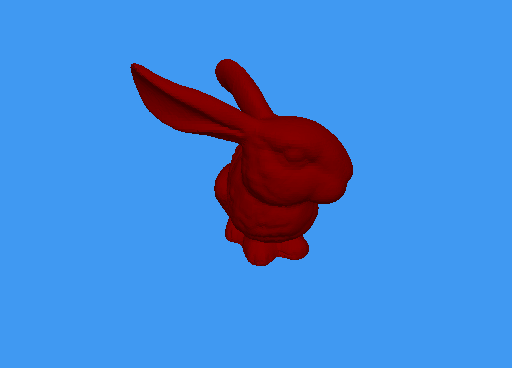
Number of objects in scene: 69451, Size of KD Tree: 1023, Building tree took: 349.331 seconds, Ray Tracing Took : 45.544 seconds |
Method 3: Surface Area Heuristic (slightly more efficient)This method is very similar to Method 2, however instead of checking both the min and max values of each AABB for the split plane, I only checked the max value. This was able to reduce the time needed to build the tree while also keeping the time needed to trace the tree fast. Despite being faster, it is still nowhere near the time needed for building using a median split. |
Bunny Screenshot 7 (Modified Surface Area Heuristic Terminating with Depth 10):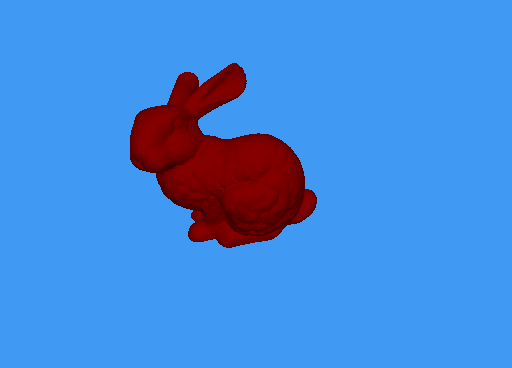
Number of objects in scene: 69451, Size of KD Tree: 1023, Building tree took: 184.722 seconds, Ray Tracing Took : 32.0841 seconds |
Bunny Screenshot 8 (Modified Surface Area Heuristic Terminating with Depth 10):
Number of objects in scene: 69451, Size of KD Tree: 1023, Building tree took: 170.035 seconds, Ray Tracing Took : 42.8825 seconds |
Method 4: Surface Area Heuristic with BinningThis method uses SAH but with the added efficiency of binning. Binning
is a technique that I discovered thanks to
this article After doing some research, I implemented my version by doing
the following: |
Bunny Screenshot 9 (Surface Area Heuristic 16 Bins, Terminating with Depth 10):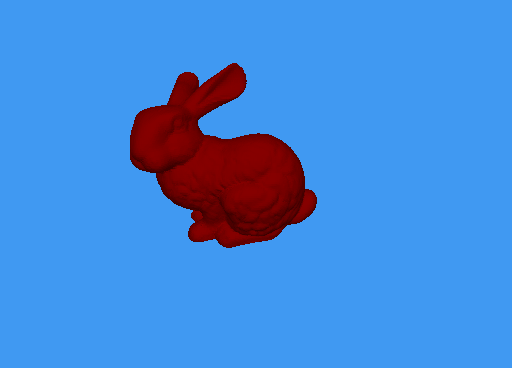
Number of objects in scene: 69451, Size of KD Tree: 1023, Building tree took: 1.07297 seconds, Ray Tracing Took : 38.6169 seconds |
Bunny Screenshot 10 (Surface Area Heuristic 16 Bins, Terminating with Depth 10):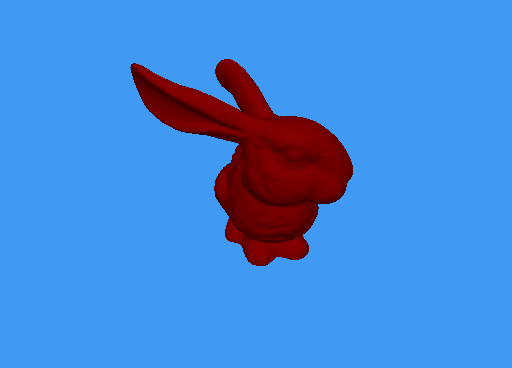
Number of objects in scene: 69451, Size of KD Tree: 1023, Building tree took: 1.221 seconds, Ray Tracing Took : 48.3823 seconds |
Bunny Screenshot 11 (Surface Area Heuristic 128 Bins, Terminating with Depth 10):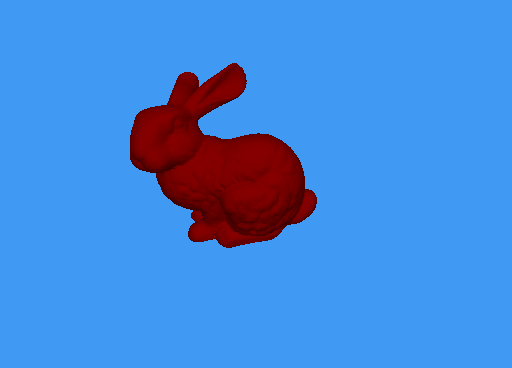
Number of objects in scene: 69451, Size of KD Tree: 1023, Building tree took: 1.08497 seconds, Ray Tracing Took : 29.6418 seconds |
Bunny Screenshot 12 (Surface Area Heuristic 16 Bins, Terminating with Depth 10):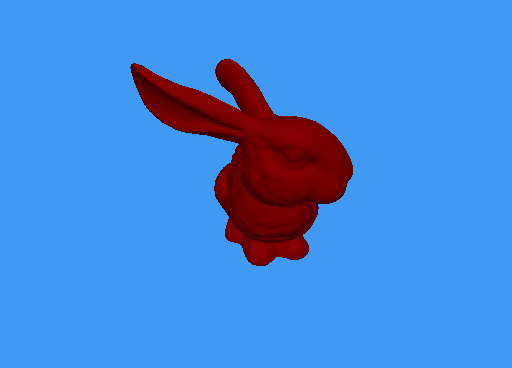
Number of objects in scene: 69451, Size of KD Tree: 1023, Building tree took: 1.08096 seconds, Ray Tracing Took : 44.9101 seconds |